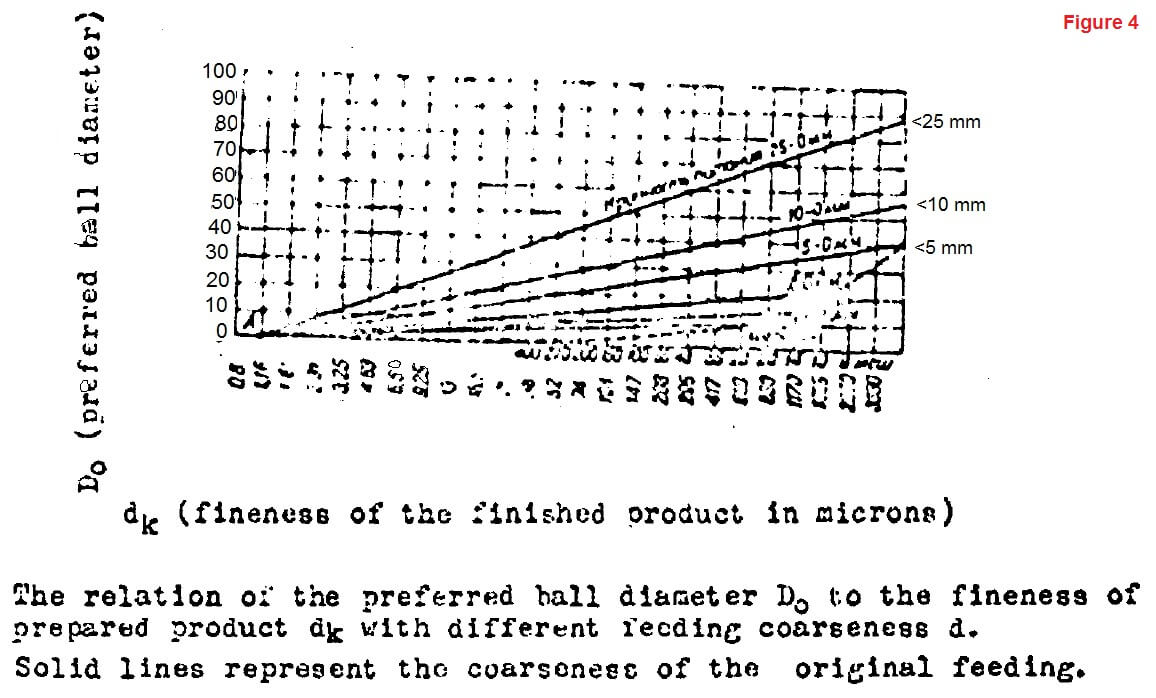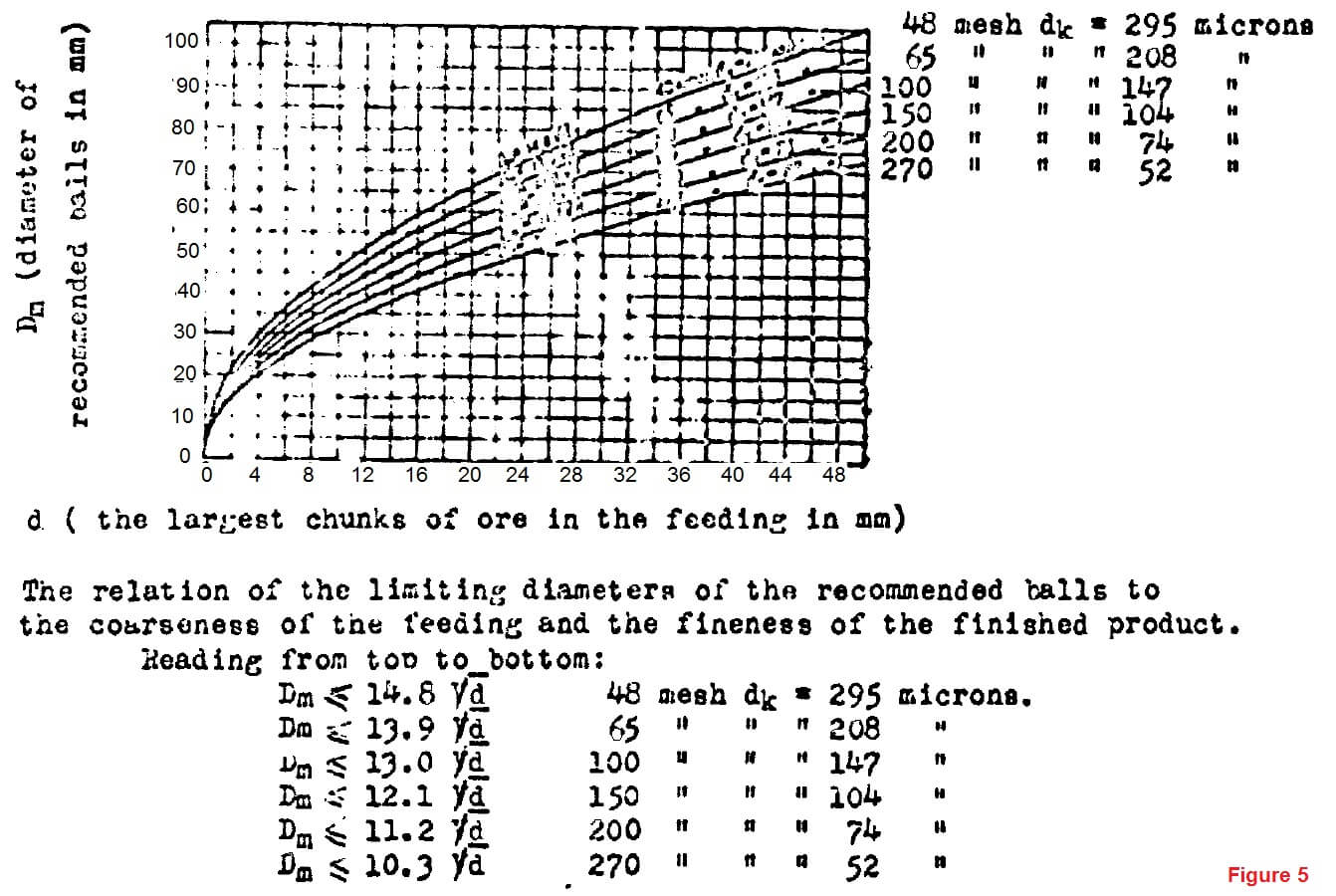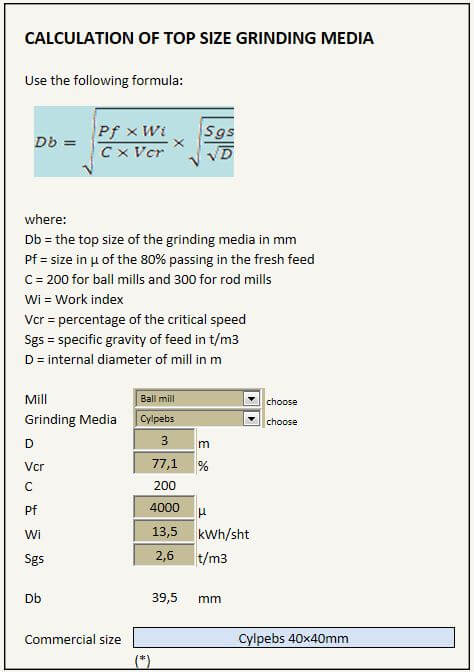In Grinding, selecting (calculate) the correct or optimum ball size that allows for the best and optimum/ideal or target grind size to be achieved by your ball mill is an important thing for a Mineral Processing Engineer AKA Metallurgist to do. Often, the ball used in ball mills is oversize “just in case”. Well, this safety factor can cost you much in recovery and/or mill liner wear and tear.
Here is your Ball Mill Design/Sizing Procedure.
- Calculation of top size grinding media (Fred C. Bond)
- Calculation of top size grinding media AZZARONI’s Formula
I attach Fred Bond’s first empirical equation for sizing grinding balls for ball mills as well as a few other links to good related articles on the topic.

I reproduced or doctored two tables and graph from an article dating back to 1948 I found interesting for its easy to use graphs.
In his paper “The Preferred Size of Balls for Ball Mills.” Mr. V. A. Olovskiy concludes:
- The ball sizing formulas from the literature on ball diameter selection do not take into consideration such as the target P90 .
- Based on his work, this formula can be derived for ball diameter sizing and selection: Dm <= 6 (log dk) * d^0.5 where Dm = the diameter of the single-sized balls in mm.d = the diameter of the largest chunks of ore in the mill feed in mm.
dk = the P90 or fineness of the finished product in microns (um)with this the finished product is considered that which will leave t 10% residue on a screen the meshes dk in microns. - To accelerate the math or calculation you can use the shortened formula:Dm <= Km * d^0.5where Km =6 (log dk) is taken from Figure 5 according to the fineness of the finished product dk.
- These formulas are applicable to the case of feeding a mill with only single-sized balls and not a mixture without consideration for ball wear.
In the event of work in ball mixtures or rationed loading, it is expedient to select balls which are also recommended by the cited formula.
The correction for wear must be introduced on the basis of some theory of ball wear in continuously running mills, however, the basic formula retains its applicability even in this event.
This Model (these charts) tend to calculate out a much smaller ball size than the other models.
If you calculate using Online Calculator/Tool https://www.themininggrindingoffice.com/topsize.html you get a 40 mm (1.5″) Ball.
- Calculation of top size grinding media (Fred C. Bond)
- Calculation of top size grinding media AZZARONI’s Formula
If you calculate from Figure 5 assuming you want/target a P90 of 60 microns you get around 22 mm (<1 inch) as a ball size.
This is quite the difference…
https://www.minproc.pwr.wroc.pl/journal/pdf/ppmp48-2.329-339.pdf




